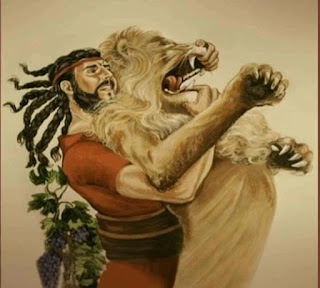The so-called Spirit Attachment is one of the oldest forms of possession by which an entity manages to be "stuck" to a living person, establishing a parasitic relationship from there; something that we had already talked about when studying the worms, larvae and parasites of the astral plane.
Technically we speak here of possession although not necessarily demonic, and not even malignant.
While most of the spirits that adhere to living persons are, in reality, non-human beings on the astral plane, there is also another type of less pernicious attachments.
The traditions and old beliefs, on the other hand, maintain that this type of tie with a spirit occurs immediately after the death of someone who does not achieve an adequate transit towards the beyond, being subject to the plane of the Kamaloka, or Plane of Desire.
These beings, still attached to the physical world due to a strong confusion and, above all, to unresolved emotional issues, as happens to most suicides, manage to stay close to the people they met in life and, in certain cases , being "stuck" to them for a considerable time.
Others hold that spiritual attachments are performed at random, when the spirit does not possess enough skill to get close to their loved ones, but instead gets any guest, of course, conveniently vulnerable.
The symptoms are always the same: sudden changes in behavior, style of dress, manners, manner of speaking and habits, among them, the appearance of sudden addictions.
The victims usually fall into deep depressions, and even manifest suicidal drives. Others, however, reveal signs of sudden multiple personality disorders. In any case, the severity of the symptoms depends on how strongly the spirit "sticks"; that is, how deep it can be established in the consciousness of its host.
Of course we speak here of the most obvious cases. There are others, however, much more subtle. In fact, many people do not even suspect that they have a spirit "stuck" on their backs.
The so-called Forms of Thought can go unnoticed for a certain time, although their existence is short and they do not possess a high degree of intelligence.
Remember that, in short, the latter are not spirits or non-human creatures, but intense thoughts, almost always dark, that manage to assume a certain degree of density and autonomy.
In short, the Forms of Thought are a fleeting but very hard species of psychic entities, independent of their origin and that develop an autonomous existence. In many cases they do not come from abroad, but we ourselves take charge of forging them.
The psychologist Carl Jung, no less, suggests that these entities are born, grow and dissolve constantly in our psyche; almost always the product of some strong sense of guilt.
We are not here in front of anything supernatural, but within the extraordinary fauna of our psyche.
Carl Jung offers us an example of how a Form of Thought is born and established in the psyche of someone:
A child draws on the wall and his mother, of course, punishes him; not without first clarifying that he should not behave like a fool and destroy things in the house. The child, defeated, translates these warnings into his unconscious. But the unconscious can not think or reason in negative terms, so a "positive form" of punishment is established there: I am a fool who destroys things.
Repeat this dynamic for a long time and these forms of thought will be tied forever in the psyche. Fortunately, it also works the other way around. If the stimuli are positive, they will remain so in the unconscious.
Most of the works of black magic are based on these Forms of Thought, only that it is not the individual who forms them, but the magician or sorcerer who manages to install them in his mind.
All the esoteric paraphernalia has as its object to make the human mind "form" a thought strong enough to really exist and act according to the impulse that gave it life.
But spirits rarely operate that way.
They do not possess the strength or the determination to "stick" to the shoulders of someone in particular, but rather the cunning to find a suitable and easy to own guest. The abuse of alcohol and drugs destroys the defenses of our mind and allows, in certain cases, that the spirits get to "stick" to our aura.
Most of the shamanic rites follow the same principle, only that here the shaman controls the situation, that is, it is he who seeks a particular type of spirit and orders him to "stick" to his aura in order to obtain knowledge or solutions for a particular problem.
With regard to this last possibility, the anthropologist Mircea Eliade wrote a remarkable study entitled: Shamanism, which analyzes practically all the ways in which a spirit can "stick" to a living person, or even to an inert object.
SEARCH YOUR OWN PERSPECTIVE
We await your comments and suggestions, until the next post, have a nice day!























